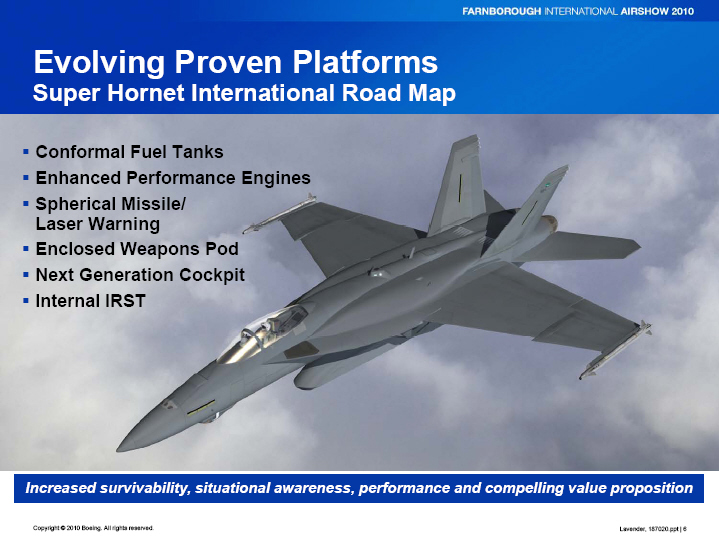The F-18F Super Hornet was one of the highlights of the recent Farnborough 2010 not only because the multi-role aircraft displayed during the Air Show, but also because Shelley Lavender, Vice President and General Manager Boeing’s Global Strike Systems unveiled the new Super Hornet International Road Map, a disclosure that may indicate that slippage in the F-35 program has encouraged the company to market the Super Hornet more aggressively in order to persuade some countries that are evaluating the F-35 to opt on the F/A-18E/F.
The upgrade equip the Super Hornet, whose effectiveness in combat has been proven in years of operations in Irak and Afghanistan (that I was able to witness in October 2009 during my visit to the USS Nimitz involved in combat operations in support of Enduring Freedom) with conformal fuel tanks, enhanced performance engines, enclosed weapons pod and other systems. The modifications, include:
- Conformal Fuel Tanks
- Enhanced Performance Engines
- Spherical Missile/Laser Warning
- Enclosed Weapons Pod
- Next Generation Cockpit
- Internal IRST
that could be retrofitted to any Block II aircraft. The most interesting change is a stealth-configured weapon 
So far the systems that provide long range thermal imaging against air and ground targets was integraded in the Super Hornet in quite an unusual way: modifying a 480 gallon centerline fuel tank to carry 330 gallons of fuel + the IRST system. This approach would allow refits to 150 existing Super Hornets even if the drawback was that a centerline tank with IRST needed to stay on the airplane in combat, compromising its aerodynamic performance and radar signature (fuel tanks are often jettisoned in combat to improve manoeuvrability).










